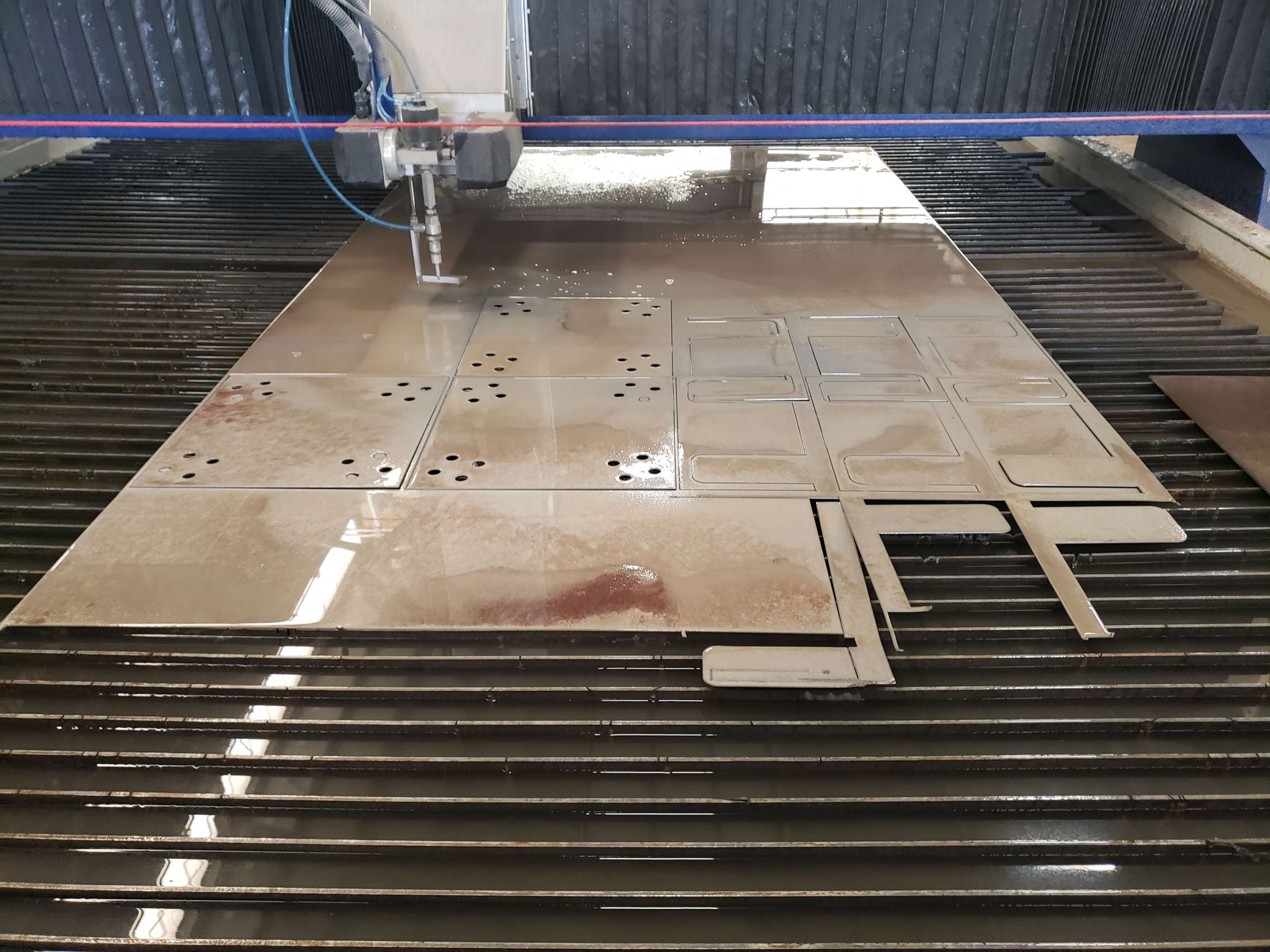Professional fabricators use a variety of tools to cut steel plate. The four most common are oxy-fuel, plasma, laser, and waterjet cutters. Each has its own advantages and disadvantages, so knowing which is best is entirely dependent on the specifications of the job at hand and the production schedule of the shop. Let’s take a closer look at these four metal cutting tables and compare their costs, capabilities according to plate size, cut quality, and speed.
Oxy-Fuel Cutters
Oxy-fuel cutting, wherein an oxygen-fueled flame is used to cut the plate, is mostly used for processing ferrous materials.
- Costs – Oxy-fuel cutting tables generally cost less to purchase and operate than other types of plate cutting systems.
- Material size – Though they can process plates as small as ¼ inch, oxy-fuel cutters are typically used for fabricating materials thicker than 1 inch.
- Cut quality – The oxygen-fueled torch generates slag but can also create a smooth cut surface if adjusted properly.
- Speed – One downside to oxy-fuel cutting is that it is a slow process. However, additional torches can be installed on the table to speed up productivity, albeit at an extra cost.
Plasma Cutting Tables
By electrically charging compressed air, plasma torches generate a conductive stream of heated gas that easily cuts through steel plates.
- Costs – Plasma cutters tend to cost more because they require an investment in a complete system, including a power supply, water cooler, gas control, torch leads, and other equipment.
- Material size – Plasma cutting tables are most effective at cutting thinner materials, ranging in size from ¼ inch to 1½ inches.
- Cut quality – Edge smoothness is ideal when the size of the plate is within the range noted above. Otherwise, quality lags on thinner or thicker plates.
- Speed – One of the best benefits of plasma cutting tables is their high processing speeds. Some models also have CNC controls for automated processing. It is possible to add a second torch for even better productivity, but this can drive up the price of an already expensive machine.
Laser Cutters
Laser cutting torches use a chemical reaction between iron and oxygen to generate a finely focused laser beam that smoothly cuts through metal plates.
- Costs – Laser cutting burn tables cost more to operate than plasma and oxy-fuel cutters. Plus, they require additional safety features, which can also add up.
- Material size – Laser cutters are most often used for processing plates less than an inch thick. However, thicker materials can be processed if the machine is properly calibrated for the task.
- Cut quality – Laser torches create a thin kerf, making them ideal for precise cutting lines and small holes. The process creates minimal dross and smooth, square edges.
- Speed – Though speed is limited, laser cutting tables can be automated to speed up production.
Waterjet Cutting Machines
Waterjet cutters use a highly pressurized stream of water to cut through metal plates.
- Costs – Both up-front costs, which include a pricey intensifier pump, and operational costs are higher than other types of metal cutting machines.
- Material size – Waterjet cutting can process thicker materials up to 6–8 inches.
- Cut quality – Cutting with a waterjet produces smoother and more accurate cuts than burn tables because it generates no heat distortion, which could otherwise affect quality.
- Speed – Waterjet cutters are easily adaptable with multiple cutting heads that can all be powered by the same intensifier pump. Therefore, this is one of the most productive plate cutting machines.
The Ideal Plate Cutting System for Your Shop
The experts at Machitech can help you find the perfect plate cutting technology for your shop. Among our offerings are heavy-duty plasma cutting tables, which can be equipped with automated CNC controls and include unlimited lifetime support. Contact us today to learn more.
 English
English  Français
Français 
